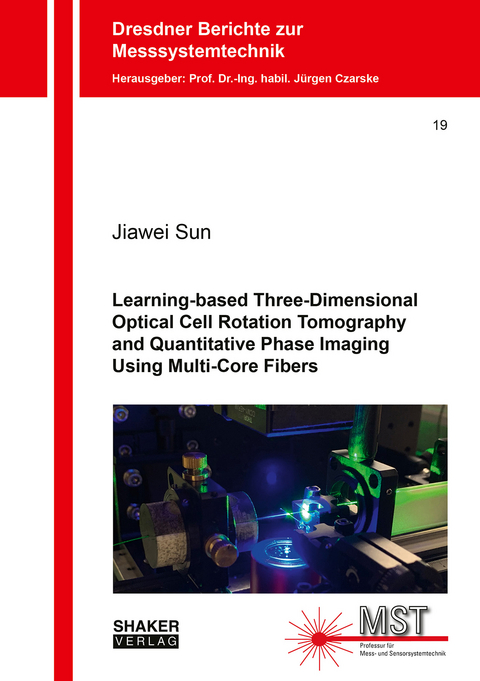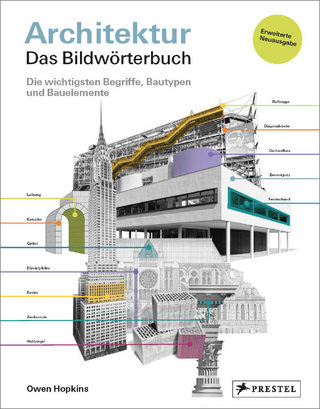
Learning-based Three-Dimensional Optical Cell Rotation Tomography and Quantitative Phase Imaging Using Multi-Core Fibers
Seiten
2023
Shaker (Verlag)
978-3-8440-9052-9 (ISBN)
Shaker (Verlag)
978-3-8440-9052-9 (ISBN)
Optical manipulation has significantly impacted biology, physics, optics, and nanotechnology. Fiber-based dual-beam traps enable optical manipulation in lab-on-a-chip systems and have emerged as vital tools for biological cell manipulation due to their flexibility and portability. However, achieving optically controlled 3D rotation of biological cells in a fiber-optic trap for precise optical tomography with isotropic resolution remains challenging.
This dissertation demonstrates a novel multi-core fiber-based dual-beam trap allowing 3D cell rotation in a program-controlled manner. A dedicated phase retrieval algorithm and a physical model based deep neural network are implemented for complex wavefront shaping through the multi-core fiber, enabling real-time holographic control of the optical manipulation beam and controlled rotation of human cancer cells in three dimensions. Conventional optical tomography faces limitations due to the missing cone problem. The proposed fiber-optic cell rotation can solve this problem using multi-axis cell rotation, enabling accurate volumetric reconstruction with isotropic resolution in 3D. An autonomous tomographic reconstruction workflow based on computer vision and machine learning is employed for robust 3D reconstruction of rotated cells. Moreover, precise quantitative phase imaging is demonstrated for the first time through an ultra-thin lensless endoscope. This dissertation could open new perspectives in multi-core fiber light field control and imaging, which will further expand their applications in clinical diagnostics, optogenetics, biosensors, integrated quantum photonic devices, and telecommunications.
This dissertation demonstrates a novel multi-core fiber-based dual-beam trap allowing 3D cell rotation in a program-controlled manner. A dedicated phase retrieval algorithm and a physical model based deep neural network are implemented for complex wavefront shaping through the multi-core fiber, enabling real-time holographic control of the optical manipulation beam and controlled rotation of human cancer cells in three dimensions. Conventional optical tomography faces limitations due to the missing cone problem. The proposed fiber-optic cell rotation can solve this problem using multi-axis cell rotation, enabling accurate volumetric reconstruction with isotropic resolution in 3D. An autonomous tomographic reconstruction workflow based on computer vision and machine learning is employed for robust 3D reconstruction of rotated cells. Moreover, precise quantitative phase imaging is demonstrated for the first time through an ultra-thin lensless endoscope. This dissertation could open new perspectives in multi-core fiber light field control and imaging, which will further expand their applications in clinical diagnostics, optogenetics, biosensors, integrated quantum photonic devices, and telecommunications.
| Erscheinungsdatum | 27.05.2023 |
|---|---|
| Reihe/Serie | Dresdner Berichte zur Messsystemtechnik ; 19 |
| Verlagsort | Düren |
| Sprache | englisch |
| Maße | 148 x 210 mm |
| Gewicht | 215 g |
| Themenwelt | Sachbuch/Ratgeber ► Natur / Technik ► Technik |
| Technik ► Maschinenbau | |
| Schlagworte | 3D cell rotation • autonomous tomographic reconstruction • dual-beam trap • fiber endoscopes • holographic control • multi-core fiber • optical manipulation • optical tomography • quantitative phase • speckle reconstruction • volumetric reconstruction |
| ISBN-10 | 3-8440-9052-5 / 3844090525 |
| ISBN-13 | 978-3-8440-9052-9 / 9783844090529 |
| Zustand | Neuware |
| Haben Sie eine Frage zum Produkt? |
Mehr entdecken
aus dem Bereich
aus dem Bereich
die wichtigsten Begriffe, Bautypen und Bauelemente
Buch | Softcover (2024)
Prestel (Verlag)
32,00 €
vom Kolosseum über die Akropolis bis zur Alhambra
Buch | Hardcover (2023)
DK (Verlag)
19,95 €
Buch | Hardcover (2021)
C. Bertelsmann (Verlag)
18,00 €


